Resources
About Us
Attention Deficit Hyperactivity Disorder (ADHD) Market Size, Share, Forecast, & Trends Analysis by Drug Type (Stimulants, Non-Stimulants), Age Group (Pediatric-Adolescents, Adults), Distribution Channel (Retail, Hospital, Online Pharmacies) - Global Forecast to 2031
Report ID: MRHC - 1041449 Pages: 130 Feb-2025 Formats*: PDF Category: Healthcare Delivery: 24 to 72 Hours Download Free Sample ReportThe growth of this market is driven by the increasing awareness of attention deficit hyperactivity disorder (ADHD), rising incidence of ADHD, and expansion of ADHD diagnoses across age groups. In addition, advancements in treatment options and growth of non-pharmacological treatments are expected to create growth opportunities for the players operating in the ADHD market. Moreover, the growing focus on personalized treatment and growth of digital therapeutics are prominent trends in the market.
In recent years, there has been growing awareness about mental health and ADHD among parents, educators, and healthcare professionals. If left untreated, ADHD can significantly impact a person’s life. During the COVID-19 pandemic, mental health such as stress, anxiety, and depression surged, leading to more comprehensive diagnostic evaluations. These evaluations revealed a notable increase in ADHD cases.
According to the Centers for Disease Control and Prevention (CDC), in 2022, approximately 7 million children aged 3-17 in the U.S. have ever been diagnosed with ADHD compared to 2016. ADHD diagnosis in children varies from 6% to 16%. This surge reflects both a broader recognition of the disorder and improved access to healthcare and diagnostic tools.
Moreover, public health campaigns and educational initiatives aimed at destigmatizing ADHD are encouraging individuals to pursue diagnosis and treatment. This shift in perception has led to a reduction in the stigma associated with ADHD, encouraging more people to pursue diagnosis and treatment. As awareness grows, there is increasing recognition that ADHD extends into adulthood, leading to a surge in demand for adult ADHD treatments, including medications and counseling. Thus, an increase in ADHD awareness is expected to drive the growth of this market across the globe.
ADHD, a neurodevelopmental disorder characterized by symptoms such as inattention, hyperactivity, and impulsivity, is becoming more commonly diagnosed, particularly in children. As awareness of the disorder expands, more parents, educators, and healthcare providers are recognizing its signs, contributing to a rise in diagnosis rates.
The demand for ADHD medications, including stimulants such as methylphenidate and amphetamines, has surged as these treatments are often the first line of intervention. Additionally, non-stimulant medications and behavioral therapy options are also in higher demand, reflecting a broader approach to managing the condition.
According to the Centers for Disease Control and Prevention (CDC), in 2023, approximately 15.5 million U.S. adults had an ADHD diagnosis, with around half of them receiving their diagnosis in adulthood. In addition, among adults with ADHD, around one-third use stimulant medications, while approximately 70% report difficulties in filling their prescriptions due to ongoing medication shortages.
The prevalence of ADHD in children is also significant. Between 2020 and 2022, the CDC reported that 11.3% of children aged 5–17 years had been diagnosed with ADHD. The condition is more prevalent among boys (14.5%) compared to girls (8.0%). The increasing recognition of ADHD's impact on quality of life underscores the necessity for effective interventions and support systems. Therefore, the rising incidence of ADHD boosts the demand for ADHD drugs.
The increasing research, innovation, and evolving patient needs are driving the advancement of ADHD treatment. Traditional treatments, such as stimulant medications, remain common, but there is increasing demand for alternative therapies due to concerns over side effects, dependence, and long-term efficacy. This has spurred the development of non-stimulant medications, digital therapeutics, and personalized treatment approaches.
Non-stimulant medications have gained traction as viable alternatives for managing ADHD symptoms. They are particularly beneficial for patients who are sensitive to stimulant side effects or have a history of substance abuse. These medications generally do not cause agitation or insomnia and have a smoother onset and offset compared to stimulants. In addition, non-stimulants can provide more stable symptom control throughout the day without the abrupt highs and lows associated with stimulants. Non-stimulant options like atomoxetine and viloxazine are becoming increasingly important for those who require alternatives due to side effects or personal preferences. In May 2024, Tris Pharma, Inc. (U.S.) Onyda XR, a liquid, nonstimulant ADHD, was approved by the FDA for treatment of ADHD. This diversification in treatment options enhances the overall management of ADHD, which provides growth opportunities for the ADHD market.
Based on drug type, the attention deficit hyperactivity disorder market is segmented into stimulants and non-stimulants. In 2025, the stimulants segment is expected to account for a larger share of the attention deficit hyperactivity disorder market primarily due to the rapid onset of stimulants, ability to target symptoms by increasing dopamine levels and clinically suggested by healthcare professionals. Additionally, many studies have shown that stimulants can reduce ADHD in approximately 70-80% of users, making them highly effective as a first-line treatment option for both children and adults.
Moreover, non-stimulants have slower onset and face challenges in gaining the same level of efficiency as stimulants. This attributes to consumers and healthcare professionals to shift towards stimulants. Furthermore, rising awareness regarding mental health diseases, recent innovations in ADHD stimulants, and strong efficiency of drugs are expected to support the growth of this market.
Based on geography, the attention deficit hyperactivity disorder market is majorly segmented into five regions: North America, Europe, Asia-Pacific, Latin America, and the Middle East & Africa. In 2024, North America accounted for the largest share of the global attention deficit hyperactivity disorder market, followed by Europe and Asia-Pacific. North America's large market share is attributed to several key factors, including the large population with mental health issues, increasing prescription rates, rising product innovations, growing incidence of ADHD in the U.S., and growing demand for stimulants.
Moreover, this region is slated to register the highest CAGR during the forecast period of 2024–2031 due to the approval and commercialization of new drugs, growing spending on ADHD treatment, rising diagnosis among adults, growing focus on personalized treatments, and technological integration like digital therapeutics.
The report includes a competitive landscape based on an extensive assessment of the key strategic developments that led market participants to adopt over the past three years.
The key players profiled in the attention deficit hyperactivity disorder market report are Eli Lilly and Company (U.S.), Lupin Limited (India), Mallinckrodt plc (Ireland), Tris Pharma, Inc (U.S.), Takeda Pharmaceutical Company Limited (Japan), Zevra Therapeutics, Inc. (U.S.), Novartis AG (Switzerland), Aytu Biopharma, Inc. (U.S.), Otsuka Pharmaceutical Co., Ltd. (Japan), Johnson & Johnson (U.S.), Alora Pharmaceuticals, LLC (U.S.), Supernus Pharmaceuticals, Inc. (U.S.), and Noven Pharmaceuticals, Inc. (U.S.).
|
Particulars |
Details |
|
Number of Pages |
145 |
|
Format |
|
|
Forecast Period |
2024–2031 |
|
Base Year |
2023 |
|
CAGR |
6% |
|
Market Size |
USD 23.66 Billion by 2031 |
|
Segments Covered |
By Drug Type
By Age Group
By Distribution Channel
|
|
Countries Covered |
North America (U.S., Canada), Europe (Germany, U.K., Spain, Italy, France and Rest of Europe), Asia-Pacific (China, India, Japan, Australia, South Korea and Rest of Asia-Pacific), Latin America (Brazil, Mexico, Argentina, and Rest of Latin America), and the Middle East & Africa (Saudi Arabia, UAE, and Rest of Middle East & Africa) |
|
Key Companies |
Eli Lilly and Company (U.S.), Lupin Limited (India), Mallinckrodt plc (Ireland), Tris Pharma, Inc (U.S.), Takeda Pharmaceutical Company Limited (Japan), Zevra Therapeutics, Inc. (U.S.), Novartis AG (Switzerland), Aytu Biopharma, Inc. (U.S.), Otsuka Pharmaceutical Co., Ltd. (Japan), Johnson & Johnson (U.S.), Alora Pharmaceuticals, LLC (U.S.), Supernus Pharmaceuticals, Inc. (U.S.), and Noven Pharmaceuticals, Inc (U.S.). |
The global attention deficit hyperactivity disorder market size was valued at $15.73 billion in 2024.
The market is projected to grow from $15.73 billion in 2024 to $23.66 billion by 2031.
The attention deficit hyperactivity disorder market analysis indicates significant growth, reaching $23.66 billion by 2031, at a compound annual growth rate (CAGR) of 6% from 2024 to 2031.
The key companies operating in this market include Eli Lilly and Company (U.S.), Lupin Limited (India), Mallinckrodt plc (Ireland), Tris Pharma, Inc (U.S.), Takeda Pharmaceutical Company Limited (Japan), Zevra Therapeutics, Inc. (U.S.), Novartis AG (Switzerland), Aytu Biopharma, Inc. (U.S.), Otsuka Pharmaceutical Co., Ltd. (Japan), Johnson & Johnson (U.S.), Alora Pharmaceuticals, LLC (U.S.), Supernus Pharmaceuticals, Inc. (U.S.), and Noven Pharmaceuticals, Inc (U.S.).
The prominent market trends in attention deficit hyperactivity disorder are growing focus on personalized treatment and growth of digital therapeutics.
By drug type, the stimulants segment is projected to hold a larger market share.
By age group, the pediatric-adolescents age-group is expected to dominate the market.
By distribution channel, the retail pharmacies segment is poised to record the dominant position in the market.
By region, North America will hold the largest share of the global attention deficit hyperactivity disorder market share in 2025. Moreover, this region is expected to grow at the highest CAGR, mainly due to the approval and commercialization of new drugs, growing spending on ADHD treatment, and rising diagnosis among adults.
The primary drivers of attention deficit hyperactivity disorder market growth include the increasing awareness of ADHD, rising incidence of ADHD, and expansion of ADHD diagnoses across age groups.
1. Market Definition & Scope
1.1. Market Definition
1.2. Market Ecosystem
1.3. Currency
1.4. Key Stakeholders
2. Research Methodology
2.1. Research Approach
2.2. Process of Data Collection and Validation
2.2.1. Secondary Research
2.2.2. Primary Research/Interviews with Key Opinion Leaders from the Industry
2.3. Market Sizing and Forecast
2.3.1. Market Size Estimation Approach
2.3.1.1. Bottom-up Approach
2.3.1.2. Top-down Approach
2.3.2. Growth Forecast Approach
2.4. Assumptions for the Study
3. Executive Summary
3.1. Overview
3.2. Segmental Analysis
3.2.1. Attention Deficit Hyperactivity Disorder Market Analysis, by Drug Type
3.2.2. Attention Deficit Hyperactivity Disorder Market Analysis, by Age Group
3.2.3. Attention Deficit Hyperactivity Disorder Market Analysis, by Distribution Channel
3.3. Regional Analysis
3.4. Key Players & Competitive Scenario
4. Market Insights
4.1. Overview
4.2. Factors Affecting Market Growth
4.2.1. Increasing Awareness of ADHD Drives the Market Growth for Attention Deficit Hyperactivity Disorder
4.2.2. Rising Incidence of ADHD Supports Market Growth
4.2.3. Expansion of ADHD Diagnoses Across Age Groups Boosting the Adoption of Attention Deficit Hyperactivity Disorder
4.2.4. Side Effects of Medications Restraints The Growth of Attention Deficit Hyperactivity Disorder Market
4.2.5. Economic Burden of Attention Deficit Hyperactivity Disorder Treatments Restricts the Market Growth
4.2.6. Advancements in Treatment Options Generate Market Growth Opportunities
4.2.7. Growth of Non-Pharmacological Treatments Creates Opportunities for the Attention Deficit Hyperactivity Disorder
4.2.8. Rising Concerns Over Medication Misuse Challenge the Market Growth
4.3. Key Trends
4.3.1. Growing Focus on Personalized Treatment for Attention Deficit Hyperactivity Disorder
4.3.2. Growth of Digital Therapeutics
4.4. Porter’s Five Forces Analysis
4.4.1. Bargaining Power of Suppliers
4.4.2. Bargaining Power of Buyers
4.4.3. Threat of Substitutes
4.4.4. Threat of New Entrants
4.4.5. Degree of Competition
5. Attention Deficit Hyperactivity Disorder Market Assessment—by Drug Type
5.1. Overview
5.2. Stimulants
5.2.1. Amphetamine
5.2.2. Lisdexamfetamine
5.2.3. Methylphenidate
5.2.4. Dexmethylphenidate
5.3. Non-Stimulants
5.3.1. Atomoxetine
5.3.2. Clonidine
5.3.3. Guanfacine
5.3.4. Other Non-stimulants
6. Attention Deficit Hyperactivity Disorder Market Assessment—by Age Group
6.1. Overview
6.2. Pediatric-Adolescents
6.3. Adults
7. Attention Deficit Hyperactivity Disorder Market Assessment—by Distribution Channel
7.1. Overview
7.2. Retail Pharmacies
7.3. Hospital Pharmacies
7.4. Online Pharmacies
8. Attention Deficit Hyperactivity Disorder Market Assessment—by Geography
8.1. Overview
8.2. North America
8.2.1. U.S.
8.2.2. Canada
8.3. Europe
8.3.1. Germany
8.3.2. U.K.
8.3.3. Spain
8.3.4. Italy
8.3.5. France
8.3.6. Rest of Europe (RoE)
8.4. Asia-Pacific
8.4.1. China
8.4.2. India
8.4.3. Japan
8.4.4. Australia
8.4.5. South Korea
8.4.6. Rest of Asia-Pacific (RoAPAC)
8.5. Latin America
8.5.1. Brazil
8.5.2. Mexico
8.5.3. Argentina
8.5.4. Rest of Latin America (RoLATAM)
8.6. Middle East & Africa
8.6.1. Saudi Arabia
8.6.2. UAE
8.6.3. Rest of Middle East & Africa (RoMEA)
9. Competitive Landscape
9.1. Overview
9.2. Key Growth Strategies
9.3. Competitive Benchmarking
9.4. Competitive Dashboard
9.4.1. Industry Leaders
9.4.2. Market Differentiators
9.4.3. Vanguards
9.4.4. Contemporary Stalwarts
9.5. Market Share/Ranking Analysis, by the Key Players, 2023
10. Company Profiles (Business Overview, Financial Overview, Product Portfolio, Strategic Developments, and SWOT Analysis*)
10.1. Eli Lilly and Company
10.2. Lupin Limited
10.3. Mallinckrodt plc
10.4. Tris Pharma, Inc.
10.5. Takeda Pharmaceutical Company Limited
10.6. Zevra Therapeutics, Inc.
10.7. Novartis AG
10.8. Aytu Biopharma, Inc.
10.9. Otsuka Pharmaceutical Co., Ltd.
10.10. Johnson & Johnson
10.11. Alora Pharmaceuticals, LLC
10.12. Supernus Pharmaceuticals, Inc.
10.13. Noven Pharmaceuticals, Inc.
10.14. Others
(Note: SWOT Analysis* will be provided of the Top 5 Companies)
11. Appendix
11.1. Available Customization
11.2. Related Reports
List of Tables
Table 1. Global Attention Deficit Hyperactivity Disorder Market, by Drug Type, 2022–2031 (USD Million)
Table 2. Global Stimulants Market, by Type, 2022–2031 (USD Million)
Table 3. Global Stimulants Market, by Country, 2022–2031 (USD Million)
Table 4. Global Amphetamine Market, by Country, 2022–2031 (USD Million)
Table 5. Global Lisdexamfetamine Market, by Country, 2022–2031 (USD Million)
Table 6. Global Methylphenidate Market, by Country, 2022–2031 (USD Million)
Table 7. Global Dexmethylphenidate Market, by Country, 2022–2031 (USD Million)
Table 8. Global Non-stimulants Market, by Type, 2022–2031 (USD Million)
Table 9. Global Non-stimulants Market, by Country, 2022–2031 (USD Million)
Table 10. Global Atomoxetine Market, by Country, 2022–2031 (USD Million)
Table 11. Global Clonidine Market, by Country, 2022–2031 (USD Million)
Table 12. Global Guanfacine Market, by Country, 2022–2031 (USD Million)
Table 13. Global Other Non-stimulants Market, by Country, 2022–2031 (USD Million)
Table 14. Global Attention Deficit Hyperactivity Disorder Market, by Age Group, 2022–2031 (USD Million)
Table 15. Global Attention Deficit Hyperactivity Disorder Market for Pediatric-Adolescents, by Country, 2022–2031 (USD Million)
Table 16. Global Attention Deficit Hyperactivity Disorder Market for Adults, by Country, 2022–2031 (USD Million)
Table 17. Global Attention Deficit Hyperactivity Disorder Market, by Distribution Channel, 2022–2031 (USD Million)
Table 18. Global Attention Deficit Hyperactivity Disorder Market for Retail Pharmacies, 2022–2031 (USD Million)
Table 19. Global Attention Deficit Hyperactivity Disorder Market for Hospital Pharmacies, 2022–2031 (USD Million)
Table 20. Global Attention Deficit Hyperactivity Disorder Market for Online Pharmacies, 2022–2031 (USD Million)
Table 21. North America: Attention Deficit Hyperactivity Disorder Market, by Country, 2022–2031 (USD Million)
Table 22. North America: Attention Deficit Hyperactivity Disorder Market, by Drug Type, 2022–2031 (USD Million)
Table 23. North America: Stimulants Market, by Type, 2022–2031 (USD Million)
Table 24. North America: Non-stimulantsstimulants Market, by Type, 2022–2031 (USD Million)
Table 25. North America: Attention Deficit Hyperactivity Disorder Market, by Age Group, 2022–2031 (USD Million)
Table 26. North America: Attention Deficit Hyperactivity Disorder Market, by Distribution Channel, 2022–2031 (USD Million)
Table 27. U.S.: Attention Deficit Hyperactivity Disorder Market, by Drug Type, 2022–2031 (USD Million)
Table 28. U.S.: Stimulants Market, by Type, 2022–2031 (USD Million)
Table 29. U.S.: Non-stimulants Market, by Type, 2022–2031 (USD Million)
Table 30. U.S.: Attention Deficit Hyperactivity Disorder Market, by Age Group, 2022–2031 (USD Million)
Table 31. U.S.: Attention Deficit Hyperactivity Disorder Market, by Distribution Channel, 2022–2031 (USD Million)
Table 32. Europe: Attention Deficit Hyperactivity Disorder Market, by Country/Region, 2022–2031 (USD Million)
Table 33. Europe: Attention Deficit Hyperactivity Disorder Market, by Drug Type, 2022–2031 (USD Million)
Table 34. Europe: Stimulants Market, by Type, 2022–2031 (USD Million)
Table 35. Europe: Non-stimulants Market, by Type, 2022–2031 (USD Million)
Table 36. Europe: Attention Deficit Hyperactivity Disorder Market, by Age Group, 2022–2031 (USD Million)
Table 37. Europe: Attention Deficit Hyperactivity Disorder Market, by Distribution Channel, 2022–2031 (USD Million)
Table 38. Germany: Attention Deficit Hyperactivity Disorder Market, by Drug Type, 2022–2031 (USD Million)
Table 39. Germany: Stimulants Market, by Type, 2022–2031 (USD Million)
Table 40. Germany: Non-stimulants Market, by Type, 2022–2031 (USD Million)
Table 41. Germany: Attention Deficit Hyperactivity Disorder Market, by Age Group, 2022–2031 (USD Million)
Table 42. Germany: Attention Deficit Hyperactivity Disorder Market, by Distribution Channel, 2022–2031 (USD Million)
Table 43. U.K.: Attention Deficit Hyperactivity Disorder Market, by Drug Type, 2022–2031 (USD Million)
Table 44. U.K.: Stimulants Market, by Type, 2022–2031 (USD Million)
Table 45. U.K.: Non-stimulants Market, by Type, 2022–2031 (USD Million)
Table 46. U.K.: Attention Deficit Hyperactivity Disorder Market, by Age Group, 2022–2031 (USD Million)
Table 47. U.K.: Attention Deficit Hyperactivity Disorder Market, by Distribution Channel, 2022–2031 (USD Million)
Table 48. Italy: Attention Deficit Hyperactivity Disorder Market, by Drug Type, 2022–2031 (USD Million)
Table 49. Italy: Stimulants Market, by Type, 2022–2031 (USD Million)
Table 50. Italy: Non-stimulants Market, by Type, 2022–2031 (USD Million)
Table 51. Italy: Attention Deficit Hyperactivity Disorder Market, by Age Group, 2022–2031 (USD Million)
Table 52. Italy: Attention Deficit Hyperactivity Disorder Market, by Distribution Channel, 2022–2031 (USD Million)
Table 53. Spain: Attention Deficit Hyperactivity Disorder Market, by Drug Type, 2022–2031 (USD Million)
Table 54. Spain: Stimulants Market, by Type, 2022–2031 (USD Million)
Table 55. Spain: Non-stimulants Market, by Type, 2022–2031 (USD Million)
Table 56. Spain: Attention Deficit Hyperactivity Disorder Market, by Age Group, 2022–2031 (USD Million)
Table 57. Spain: Attention Deficit Hyperactivity Disorder Market, by Distribution Channel, 2022–2031 (USD Million)
Table 58. France: Attention Deficit Hyperactivity Disorder Market, by Drug Type, 2022–2031 (USD Million)
Table 59. France: Stimulants Market, by Type, 2022–2031 (USD Million)
Table 60. France: Non-stimulants Market, by Type, 2022–2031 (USD Million)
Table 61. France: Attention Deficit Hyperactivity Disorder Market, by Age Group, 2022–2031 (USD Million)
Table 62. France: Attention Deficit Hyperactivity Disorder Market, by Distribution Channel, 2022–2031 (USD Million)
Table 63. Rest of Europe: Attention Deficit Hyperactivity Disorder Market, by Drug Type, 2022–2031 (USD Million)
Table 64. Rest of Europe: Stimulants Market, by Type, 2022–2031 (USD Million)
Table 65. Rest of Europe: Non-stimulants Market, by Type, 2022–2031 (USD Million)
Table 66. Rest of Europe: Attention Deficit Hyperactivity Disorder Market, by Age Group, 2022–2031 (USD Million)
Table 67. Rest of Europe: Attention Deficit Hyperactivity Disorder Market, by Distribution Channel, 2022–2031 (USD Million)
Table 68. Asia-Pacific: Attention Deficit Hyperactivity Disorder Market, by Country/Region, 2022–2031 (USD Million)
Table 69. Asia-Pacific: Attention Deficit Hyperactivity Disorder Market, by Drug Type, 2022–2031 (USD Million)
Table 70. Asia-Pacific: Stimulants Market, by Type, 2022–2031 (USD Million)
Table 71. Asia-Pacific: Non-stimulants Market, by Type, 2022–2031 (USD Million)
Table 72. Asia-Pacific: Attention Deficit Hyperactivity Disorder Market, by Age Group, 2022–2031 (USD Million)
Table 73. Asia-Pacific: Attention Deficit Hyperactivity Disorder Market, by Distribution Channel, 2022–2031 (USD Million)
Table 74. China: Attention Deficit Hyperactivity Disorder Market, by Drug Type, 2022–2031 (USD Million)
Table 75. China: Stimulants Market, by Type, 2022–2031 (USD Million)
Table 76. China: Non-stimulants Market, by Type, 2022–2031 (USD Million)
Table 77. China: Attention Deficit Hyperactivity Disorder Market, by Age Group, 2022–2031 (USD Million)
Table 78. China: Attention Deficit Hyperactivity Disorder Market, by Distribution Channel, 2022–2031 (USD Million)
Table 79. India: Attention Deficit Hyperactivity Disorder Market, by Drug Type, 2022–2031 (USD Million)
Table 80. India: Stimulants Market, by Type, 2022–2031 (USD Million)
Table 81. India: Non-stimulants Market, by Type, 2022–2031 (USD Million)
Table 82. India: Attention Deficit Hyperactivity Disorder Market, by Age Group, 2022–2031 (USD Million)
Table 83. India: Attention Deficit Hyperactivity Disorder Market, by Distribution Channel, 2022–2031 (USD Million)
Table 84. Japan: Attention Deficit Hyperactivity Disorder Market, by Drug Type, 2022–2031 (USD Million)
Table 85. Japan: Stimulants Market, by Type, 2022–2031 (USD Million)
Table 86. Japan: Non-stimulants Market, by Type, 2022–2031 (USD Million)
Table 87. Japan: Attention Deficit Hyperactivity Disorder Market, by Age Group, 2022–2031 (USD Million)
Table 88. Japan: Attention Deficit Hyperactivity Disorder Market, by Distribution Channel, 2022–2031 (USD Million)
Table 89. Australia: Attention Deficit Hyperactivity Disorder Market, by Drug Type, 2022–2031 (USD Million)
Table 90. Australia: Stimulants Market, by Type, 2022–2031 (USD Million)
Table 91. Australia: Non-stimulants Market, by Type, 2022–2031 (USD Million)
Table 92. Australia: Attention Deficit Hyperactivity Disorder Market, by Age Group, 2022–2031 (USD Million)
Table 93. Australia: Attention Deficit Hyperactivity Disorder Market, by Distribution Channel, 2022–2031 (USD Million)
Table 94. South Korea: Attention Deficit Hyperactivity Disorder Market, by Drug Type, 2022–2031 (USD Million)
Table 95. South Korea: Stimulants Market, by Type, 2022–2031 (USD Million)
Table 96. South Korea: Non-stimulants Market, by Type, 2022–2031 (USD Million)
Table 97. South Korea: Attention Deficit Hyperactivity Disorder Market, by Age Group, 2022–2031 (USD Million)
Table 98. South Korea: Attention Deficit Hyperactivity Disorder Market, by Distribution Channel, 2022–2031 (USD Million)
Table 99. Rest of Asia-Pacific: Attention Deficit Hyperactivity Disorder Market, by Drug Type, 2022–2031 (USD Million)
Table 100. Rest of Asia-Pacific: Stimulants Market, by Type, 2022–2031 (USD Million)
Table 101. Rest of Asia-Pacific: Non-stimulants Market, by Type, 2022–2031 (USD Million)
Table 102. Rest of Asia-Pacific: Attention Deficit Hyperactivity Disorder Market, by Age Group, 2022–2031 (USD Million)
Table 103. Rest of Asia-Pacific: Attention Deficit Hyperactivity Disorder Market, by Distribution Channel, 2022–2031 (USD Million)
Table 104. Latin America: Attention Deficit Hyperactivity Disorder Market, by Country/Region, 2022–2031 (USD Million)
Table 105. Latin America: Attention Deficit Hyperactivity Disorder Market, by Drug Type, 2022–2031 (USD Million)
Table 106. Latin America: Stimulants Market, by Type, 2022–2031 (USD Million)
Table 107. Latin America: Non-stimulants Market, by Type, 2022–2031 (USD Million)
Table 108. Latin America: Attention Deficit Hyperactivity Disorder Market, by Age Group, 2022–2031 (USD Million)
Table 109. Latin America: Attention Deficit Hyperactivity Disorder Market, by Distribution Channel, 2022–2031 (USD Million)
Table 110. Brazil: Attention Deficit Hyperactivity Disorder Market, by Drug Type, 2022–2031 (USD Million)
Table 111. Brazil: Stimulants Market, by Type, 2022–2031 (USD Million)
Table 112. Brazil: Non-stimulants Market, by Type, 2022–2031 (USD Million)
Table 113. Brazil: Attention Deficit Hyperactivity Disorder Market, by Age Group, 2022–2031 (USD Million)
Table 114. Brazil: Attention Deficit Hyperactivity Disorder Market, by Distribution Channel, 2022–2031 (USD Million)
Table 115. Mexico: Attention Deficit Hyperactivity Disorder Market, by Drug Type, 2022–2031 (USD Million)
Table 116. Mexico: Stimulants Market, by Type, 2022–2031 (USD Million)
Table 117. Mexico: Non-stimulants Market, by Type, 2022–2031 (USD Million)
Table 118. Mexico: Attention Deficit Hyperactivity Disorder Market, by Age Group, 2022–2031 (USD Million)
Table 119. Mexico: Attention Deficit Hyperactivity Disorder Market, by Distribution Channel, 2022–2031 (USD Million)
Table 120. Argentina: Attention Deficit Hyperactivity Disorder Market, by Drug Type, 2022–2031 (USD Million)
Table 121. Argentina: Stimulants Market, by Type, 2022–2031 (USD Million)
Table 122. Argentina: Non-stimulants Market, by Type, 2022–2031 (USD Million)
Table 123. Argentina: Attention Deficit Hyperactivity Disorder Market, by Age Group, 2022–2031 (USD Million)
Table 124. Argentina: Attention Deficit Hyperactivity Disorder Market, by Distribution Channel, 2022–2031 (USD Million)
Table 125. Rest of Latin America: Attention Deficit Hyperactivity Disorder Market, by Drug Type, 2022–2031 (USD Million)
Table 126. Rest of Latin America: Stimulants Market, by Type, 2022–2031 (USD Million)
Table 127. Rest of Latin America: Non-stimulants Market, by Type, 2022–2031 (USD Million)
Table 128. Rest of Latin America: Attention Deficit Hyperactivity Disorder Market, by Age Group, 2022–2031 (USD Million)
Table 129. Rest of Latin America: Attention Deficit Hyperactivity Disorder Market, by Distribution Channel, 2022–2031 (USD Million)
Table 130. Middle East & Africa: Attention Deficit Hyperactivity Disorder Market, by Country/Region, 2022–2031 (USD Million)
Table 131. Middle East & Africa: Attention Deficit Hyperactivity Disorder Market, by Drug Type, 2022–2031 (USD Million)
Table 132. Middle East & Africa: Stimulants Market, by Type, 2022–2031 (USD Million)
Table 133. Middle East & Africa: Non-stimulants Market, by Type, 2022–2031 (USD Million)
Table 134. Middle East & Africa: Attention Deficit Hyperactivity Disorder Market, by Age Group, 2022–2031 (USD Million)
Table 135. Middle East & Africa: Attention Deficit Hyperactivity Disorder Market, by Distribution Channel, 2022–2031 (USD Million)
Table 136. Saudi Arabia: Attention Deficit Hyperactivity Disorder Market, by Drug Type, 2022–2031 (USD Million)
Table 137. Saudi Arabia: Stimulants Market, by Type, 2022–2031 (USD Million)
Table 138. Saudi Arabia: Non-stimulants Market, by Type, 2022–2031 (USD Million)
Table 139. Saudi Arabia: Attention Deficit Hyperactivity Disorder Market, by Age Group, 2022–2031 (USD Million)
Table 140. Saudi Arabia: Attention Deficit Hyperactivity Disorder Market, by Distribution Channel, 2022–2031 (USD Million)
Table 141. UAE: Attention Deficit Hyperactivity Disorder Market, by Drug Type, 2022–2031 (USD Million)
Table 142. UAE: Stimulants Market, by Type, 2022–2031 (USD Million)
Table 143. UAE: Non-stimulants Market, by Type, 2022–2031 (USD Million)
Table 144. UAE: Attention Deficit Hyperactivity Disorder Market, by Age Group, 2022–2031 (USD Million)
Table 145. UAE: Attention Deficit Hyperactivity Disorder Market, by Distribution Channel, 2022–2031 (USD Million)
Table 146. Rest of Middle East & Africa: Attention Deficit Hyperactivity Disorder Market, by Drug Type, 2022–2031 (USD Million)
Table 147. Rest of Middle East & Africa: Stimulants Market, by Type, 2022–2031 (USD Million)
Table 148. Rest of Middle East & Africa: Non-stimulants Market, by Type, 2022–2031 (USD Million)
Table 149. Rest of Middle East & Africa: Attention Deficit Hyperactivity Disorder Market, by Age Group, 2022–2031 (USD Million)
Table 150. Rest of Middle East & Africa: Attention Deficit Hyperactivity Disorder Market, by Distribution Channel, 2022–2031 (USD Million)
Table 151. Recent Developments, by Company, (2021–2024)
List of Figures
Figure 1. Research Process
Figure 2. Secondary Sources Referenced for this Study
Figure 3. Primary Research Techniques
Figure 4. Key Executives Interviewed
Figure 5. Breakdown of Primary Interviews (Supply Side & Demand Side)
Figure 6. Market Sizing and Growth Forecast Approach
Figure 7. In 2024, the Stimulants Segment to Dominate the Attention Deficit Hyperactivity Disorder Market
Figure 8. In 2024, the Pediatric-adolescents Age Group Segment to Dominate the Attention Deficit Hyperactivity Disorder Market
Figure 9. In 2024, the Retail Pharmacies Segment to Dominate the Attention Deficit Hyperactivity Disorder Market
Figure 10. In 2024, North America Dominates the Overall Attention Deficit Hyperactivity Disorder Market
Figure 11. Impact Analysis of Market Dynamics
Figure 12. Attention Deficit Hyperactivity Disorder Market: Porter’s Five Forces Analysis
Figure 13. Global Attention Deficit Hyperactivity Disorder Market, by Drug Type, 2024 Vs. 2031 (USD Million)
Figure 14. Global Attention Deficit Hyperactivity Disorder Market, by Age Group, 2024 Vs. 2031 (USD Million)
Figure 15. Global Attention Deficit Hyperactivity Disorder Market, by Distribution Channel, 2024 Vs. 2031 (USD Million)
Figure 16. North America: Attention Deficit Hyperactivity Disorder Market Snapshot (2024)
Figure 17. Europe: Attention Deficit Hyperactivity Disorder Market Snapshot (2024)
Figure 18. Asia-Pacific: Attention Deficit Hyperactivity Disorder Market Snapshot (2024)
Figure 19. Latin America: Attention Deficit Hyperactivity Disorder Market Snapshot (2024)
Figure 20. Middle East & Africa: Attention Deficit Hyperactivity Disorder Market Snapshot (2024)
Figure 21. Key Growth Strategies Adopted by Leading Players (2021–2024)
Figure 22. Global Attention Deficit Hyperactivity Disorder Market Competitive Benchmarking, by Type
Figure 23. Competitive Dashboard: Global Attention Deficit Hyperactivity Disorder Market
Figure 24. Eli Lilly and Company.: Financial Overview (2023)
Figure 25. Lupin Limited.: Financial Overview (2024)
Figure 26. Mallinckrodt plc.: Financial Overview (2023)
Figure 27. Takeda Pharmaceutical Company Limited.: Financial Overview (2023)
Figure 28. Zevra Therapeutics, Inc.: Financial Overview (2023)
Figure 29. Novartis AG: Financial Overview (2023)
Figure 30. Aytu Biopharma, Inc.: Financial Overview (2023)
Figure 31. Otsuka Pharmaceutical Co., Ltd. : Financial Overview (2023)
Figure 32. Johnson & Johnson: Financial Overview (2023)
Figure 33. Supernus Pharmaceuticals, Inc.: Financial Overview (2023)
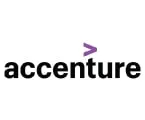

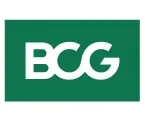
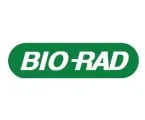
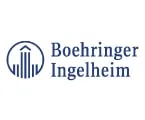
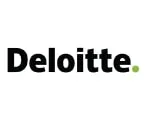
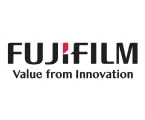
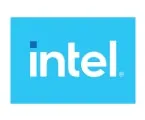
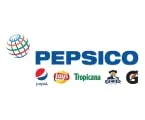
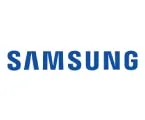

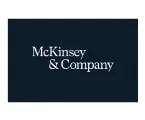
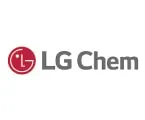
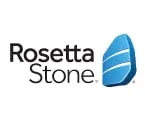
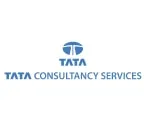
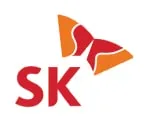
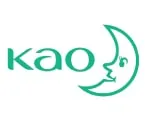
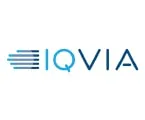
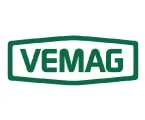
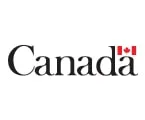

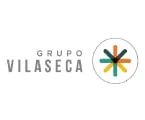
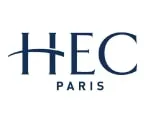

Published Date: Aug-2017
Published Date: Mar-2024
Published Date: Jan-2024
Published Date: Nov-2024
Published Date: Jun-2024
Please enter your corporate email id here to view sample report.
Subscribe to get the latest industry updates